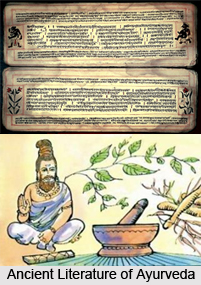 Tuberculosis can be called as the king of diseases. According to Hindu mythology, the Moon that can be called as the king among the satellites of the earth was afflicted by a curse of Brahma. Brahma is the creator and hence the name is Rajayakshma.
Tuberculosis can be called as the king of diseases. According to Hindu mythology, the Moon that can be called as the king among the satellites of the earth was afflicted by a curse of Brahma. Brahma is the creator and hence the name is Rajayakshma.
Tuberculosis is one of the most highly contagious diseases to have afflicted mankind.
This is mainly an infectious disease that usually attacks the lungs, but also can attack almost any part of the body. Tuberculosis is spread from person to person through the air. When the people with TB in their lungs or throat cough, laugh, sneeze, sing, or even talk, the germs that cause TB can be spread into the air. If another person breathes in these germs there is a chance that they will become infected with tuberculosis. Repeated contact is usually required for infection. It is important to understand that there is a difference between being infected with TB and having TB disease. Someone who is infected with TB has the TB germs, or bacteria, in their body. The body`s defenses are protecting them from the germs and they are not sick. This is referred to as latent TB. In other case someone with TB disease is sick and can also spread the disease to other people. At that point of time the affected person with TB disease needs to see a doctor as soon as possible. This is referred to as active TB.
It is not easy to become infected with tuberculosis. Usually a person has to be close to someone with TB disease for a long period of time. TB is usually spread between family members, close friends, and people who work or live together. TB is spread most easily in closed spaces over a long period of time. However although rare, transmission in an airplane has been documented.
Even if someone becomes infected with tuberculosis, that does not mean they will get TB disease. Most people who become infected do not develop TB disease because their body`s defenses protect them. Most active cases of TB disease result from activating old infection in people with impaired immune systems
Causes and Symptoms: Tuberculosis or TB is caused by the tiny organism, Mycobacterium tuberculosis. Little lumps or tubercles form in the part affected, and become soft and suppurate as the disease advances. A slight rise in temperature generally occurs in the evening, night sweats, discharge of blood with phlegm, and extensive bleeding from the lungs in the final stages, bring on death. TB may affect the bones, the membranes of the brain that lead to meningitis, or the glands, when it is called scrofula. It may be caused when a person pricks himself with anything sharp infected with the germs, or inhalation of dust particles mixed with the tiny microbe. But the main factor responsible for the disease can be mentioned as the susceptibility to it, due to a constitution weakened by continuous ill health, a lowered power of resistance, heredity, an unhealthy atmosphere, excessive use of intoxicants, over-indulgence in .sex, asthma, and a disease of the metabolism like diabetes. It is also a disease connected with filth and poverty and does not usually attack persons living in clean surroundings and having sufficient means to feed them properly.
In the early stages of the disease, there is an irritating cough, particularly in the morning, either without an expectoration or with a clear mucus or phlegm. The first sign of the disease is blood-flecked phlegm attended by fever in the evenings and below normal temperature in the early morning. There are also night sweats. When the symptoms are aggravated and emaciation has set in, the second stage is supposed to have been reached. If extreme care is not taken and treatment is not initiated, it may spread to the throat and also to the intestines. The terminal stage comes when the illness reaches deep into the lungs and they are full of cavities. The voice of the patient may become husky at this stage; there may be diahorrea and extreme prostration. The patient becomes unable to leave the bed. Death comes because of extensive haemorrhage.
The duration of the illness depends on four factors. These can be mentioned as the intensity of the infection, the age of the patient, the stage at which the disease has been recognized, and the natural resistance of the body.
Types of Tuberculosis: If the disease reaches the intestines, there is inflammation of the bowels with impairment of digestion, loss of appetite, distension of the stomach, rumbling noises in the abdomen and a persistent ache. If the small intestine is involved, the patient is constipated, but when the large intestine is the seat of the malady, diahorrea is the result. Emaciation increases faster than in pulmonary TB.
In scrofula or TB of the glands, inflammation is the chief characteristic. The glands are swollen and enlarged. When a patient suffers from TB of the bones, the bones start crumbling. If the disease reaches the spine, there is curvature and the patient is unable to stand erect. TB of the bones generally affects young people. In older people, the bones generally affected are the femur and the tibia.




















